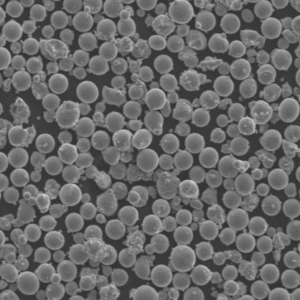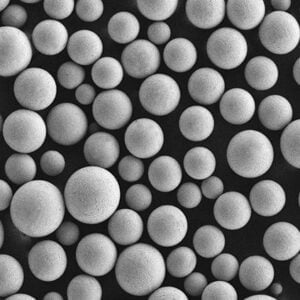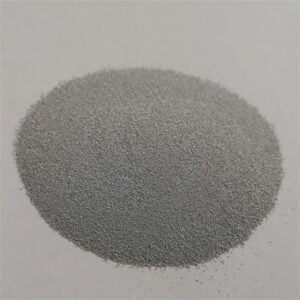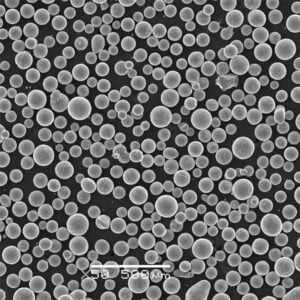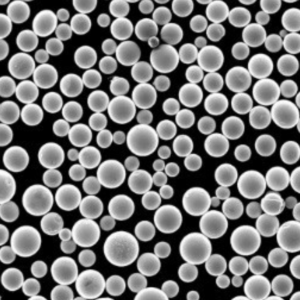インコネル3Dプリンティング入門
目次
インコネルはニッケルクロム超合金で、さまざまな金属積層造形プロセスで3Dプリントできます。このガイドでは、適用可能な技術、材料特性、用途、考慮事項など、インコネル3Dプリントの詳細な概要を説明します。
入門 3Dプリンティング・インコネル
インコネルは、高強度、耐食性、耐熱性を示すニッケル・クロム基超合金の一群を指す。インコネルが3Dプリンティングに適している主な特性は以下の通り:
- 高温強度と耐クリープ性
- 耐酸化性と耐食性
- 良好な機械的特性
- 溶接性と加工性
- 金属AMプロセス用の粉末状で入手可能
インコネル718やインコネル625などのインコネル合金は、航空宇宙エンジン、ガスタービン、原子炉、その他の要求の厳しい用途で広く使用されています。積層造形は、性能向上のために複雑で最適化されたインコネル部品を可能にします。
このガイドでは、AM用インコネル鋼種、適用プロセス、パラメータ、特性、用途、後処理、コスト、比較について説明します。
3Dプリンティング用インコネル合金グレード
3Dプリント可能な主なインコネル超合金には以下のものがある:
AM用インコネル
| 合金 | 構成 | 主要物件 |
|---|---|---|
| インコネル718 | Ni、Cr、Fe、Nb、Mo | 強度、靭性、溶接性 |
| インコネル625 | Ni、Cr、Mo、Nb | 耐食性、疲労強度 |
| インコネル939 | Ni、Co、Cr、W、Nb、Ti | 熱間硬度、クリープ強度 |
| インコネル X-750 | Ni、Cr、Fe、Ti、Al | 高温耐酸化性 |
- インコネル718は、その最適な強度とコストにより、最も広く3Dプリントされているグレードである。
- インコネル625は最高の耐食性を持ち、海洋用途に適しています。
- インコネルX-750は700℃までの極端な温度に耐える。
- グレードは、特定の使用条件や要件に合わせて最適化されている。
- カスタム・インコネル合金を調合し、3Dプリントすることもできる。
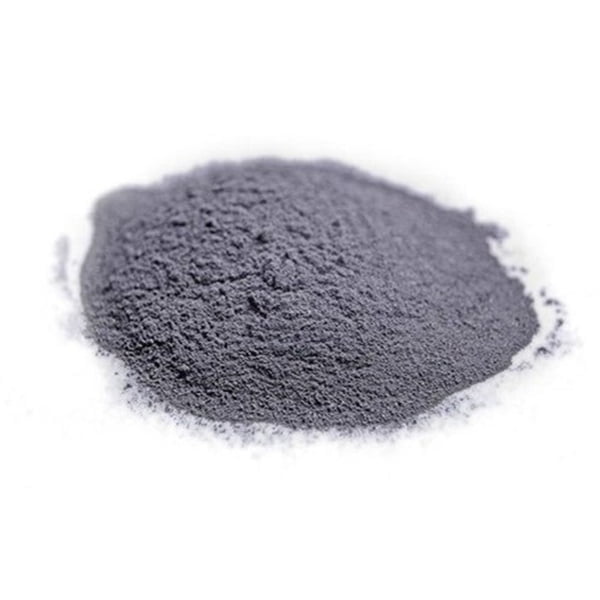
インコネル3Dプリンティングプロセス
インコネルは、粉末床溶融法と指向性エネルギー蒸着法の両方を用いて印刷することができる:
インコネル3Dプリンティングプロセス
| プロセス | 方法 | 説明 |
|---|---|---|
| パウダーベッド・フュージョン | DMLS、SLM、EBM | パウダーベッドはレーザーまたは電子ビームによって選択的に溶融される。 |
| 直接エネルギー蒸着 | LENS、金属プラズマ蒸着、ワイヤーアークAM | 集中した熱源で金属粉やワイヤーを溶かす |
- インコネル印刷では、DMLSやEBMのようなパウダーベッドプロセスが最も一般的です。
- LENSのようなDED法は、修理や大きなニアネットシェイプ部品に使用される。
- プロセス・パラメーターは、特定のインコネル合金ごとに最適化する必要があります。
- 応力緩和熱処理などの後処理が推奨される。
の性質 3Dプリンテッド・インコネル
3Dプリントされたインコネルは、以下の特性を示す:
インコネル3Dプリンティング特性
| プロパティ | 代表値 |
|---|---|
| 密度 | 8.19 g/cm3 |
| 引張強さ | 1000-1300 MPa |
| 降伏強度 | 500-1100 MPa |
| 破断伸度 | 10-40% |
| 融点 | 1350-1430°C |
| 熱伝導率 | 11-20 W/mK |
| 耐食性 | 様々な環境に対応 |
| 耐熱性 | 700℃まで優れています |
- 機械的特性は、従来から製造されているインコネルと同等かそれ以上。
- 方向に凝固した微細構造は、異方的な特性をもたらす。
- HIPのような後処理は、密度、延性、等方性を向上させる。
- 特性は、3Dプリントプロセスのパラメータに大きく依存する。
3Dプリンテッド・インコネルの用途
付加製造されたインコネル部品を使用する主な産業には次のようなものがある:
インコネル3Dプリンティング・アプリケーション
| 産業 | 用途 |
|---|---|
| 航空宇宙 | タービンブレード、エンジン部品、ノズル、スラストチャンバー |
| 石油・ガス | バルブ、坑口部品、圧力容器 |
| 原子力 | 原子炉内部、熱交換器 |
| 自動車 | ターボチャージャーホイール、排気部品 |
| ケミカル | ポンプ、バルブ、反応容器 |
| メディカル | インプラント、手術器具 |
- 航空宇宙産業は、フライトクリティカルな超合金部品の最大の採用企業である。
- 石油・ガスは坑井設備の高温強度を活用している。
- 原子力産業では、耐放射性腐食性のために使用されている。
- 自動車のスポーツ用途では、軽量化された最適な形状が活用される。
- メディカルは、インプラントや器具の生体適合性を活用。
インコネルを3Dプリントする利点と従来の製造方法との比較
従来の方法と比較したインコネル3Dプリントの主な利点:
3Dプリンティングと鋳造/機械加工の比較
- 他では不可能な複雑で有機的な形状を自由に作ることができる
- 重量とパフォーマンスを向上させるために部品を最適化し、組み合わせる能力
- 小ロット生産におけるリードタイムとコストの削減
- サブトラクティブ法の工具/治具の制約に対応
- 機能階調とトポロジーの最適化が可能
- 最適化された設計により材料の無駄を削減
- ジャスト・イン・タイム、オン・デマンドで、使用場所に近い生産
3Dプリント・インコネルのコスト分析
インコネル3Dプリンティングのコストは、以下の条件によって異なります:
コストドライバー
- AM機購入費、運営費
- インコネル粉末材料コスト(~$100~200/kg)
- デザイン、印刷、後処理の人件費
- 生産量
- 部品サイズと形状の複雑さ
- 後処理の要件
標準的な部品コストの範囲
- プリント部品1kgあたり$50~$500
- 小物部品~$100~$5000
- 大型の複雑な航空宇宙部品は、$15,000ドル以上かかることもある。
の課題 3Dプリンティング・インコネル
インコネルAMの課題には次のようなものがある:
- インコネル粉末の高い材料費
- 残留応力の制御
- 熱間等方圧プレス(HIP)の要件
- 大規模な機械加工を必要とする高い表面粗さ
- 有能なAM機器サプライヤーの数は限られている
- 各合金グレードのプロセスパラメータの最適化
- 再現性と品質基準の確保
AM技術のさらなる発展により、印刷性、表面仕上げ、材料特性が改善され、インコネル印刷コストが削減され続けている。
3Dプリンティング用インコネルと他の材料との比較
AM用インコネルと他の材料との比較
| 素材 | 長所 | 短所 |
|---|---|---|
| チタン合金 | 低密度、優れた強度 | 低温能力 |
| ステンレス鋼 | コスト、入手可能性 | インコネルより強度が低い |
| 工具鋼 | 硬度、耐摩耗性 | クラッキングの問題 |
| コバルトクロム | 生体適合性 | 限られた高温強度 |
| アルミニウム合金 | より低いコストと密度 | はるかに低い強度 |
- インコネルは、高強度、耐熱性、耐食性のベスト・コンビネーションを提供する。
- ステンレス鋼より高価だが、はるかに高温で使用できる。
- チタンは強度対重量で優れているが、動作限界は低い。
- 具体的な用途に応じて選択する。
インコネル3Dプリンティングの要点
- インコネル・ニッケル・クロム超合金は、高い強度と耐熱性を提供します。
- 広く使用されているグレードは、3Dプリント可能なインコネル718、625、X-750である。
- 主なプロセスは、DMLS/SLMやDED法のような粉末床溶融法である。
-従来から製造されているインコネルと比較しても遜色なく、性能も上回ることが多い。
- 航空宇宙エンジンと原子炉が主な応用分野である。
- 印刷にかかるコストは、サイズなどの要因によって1kgあたり$50~500の幅がある。
- より簡単な印刷、より良い仕上がり、より広い普及を目指した進化。
よくあるご質問
Q: インコネルは3Dプリンティングで何に使われていますか?
A: インコネルは、航空宇宙エンジン、ガスタービン、原子炉など、耐熱性を必要とする高性能部品の3Dプリントに使用されています。
Q: インコネルにはどの3Dプリントプロセスが最適ですか?
A: インコネル合金の印刷には、DMLSやSLMのような粉末溶融法が最も一般的です。しかし、LENSのようなDEDプロセスは、大きなニアネットシェイプにメリットがあります。
Q: 3Dプリントしたインコネルは後処理が必要ですか?
A: はい、熱間等方圧加圧(HIP)のような後加工は、内部応力を緩和し、材料の等方性と特性を改善するために推奨されます。
Q: 3Dプリンターで造られたインコネルは、鍛造インコネルと同じ強度がありますか?
A: はい、積層造形では、従来から製造されている鍛造インコネルと同等以上の機械的特性を持つインコネル部品を製造することができます。
Q: インコネル718と625の違いは何ですか?
A: インコネル718は全体的な機械的特性が優れていますが、インコネル625は特に海洋環境において優れた耐食性を発揮します。
Q: インコネルの3Dプリントは難しいですか?
A: インコネルは、アルミニウムやチタンのような金属に比べて印刷が難しい場合があります。残留応力や割れを制御するためには、プリンターのパラメータを慎重に最適化する必要があります。
Q: インコネル3Dプリンティングではどのような精度が得られますか?
A: インコネルAM部品の寸法精度は、使用するプロセスにもよりますが、±0.1~0.2%程度が可能です。必要であれば、機械加工によってさらに精度を向上させることができます。
Q: 印刷インコネルは熱間加工インコネルと同じ強度がありますか?
A: はい、粉末床溶融プロセスではインコネルに微細な組織を形成することができ、その結果、熱間加工部品と同等以上の強度を得ることができます。
Q: インコネルAM部品にはどのような表面仕上げが期待できますか?
A: 印刷されたままの表面粗さは、通常10~25ミクロンRaです。より微細な表面仕上げを実現するには、追加の機械加工と研磨が必要になることがよくあります。
シェアする
MET3DP Technology Co., LTDは、中国青島に本社を置く積層造形ソリューションのリーディングプロバイダーです。弊社は3Dプリンティング装置と工業用途の高性能金属粉末を専門としています。
関連記事
Met3DPについて
最新情報
製品

3Dプリンティングと積層造形用金属粉末







